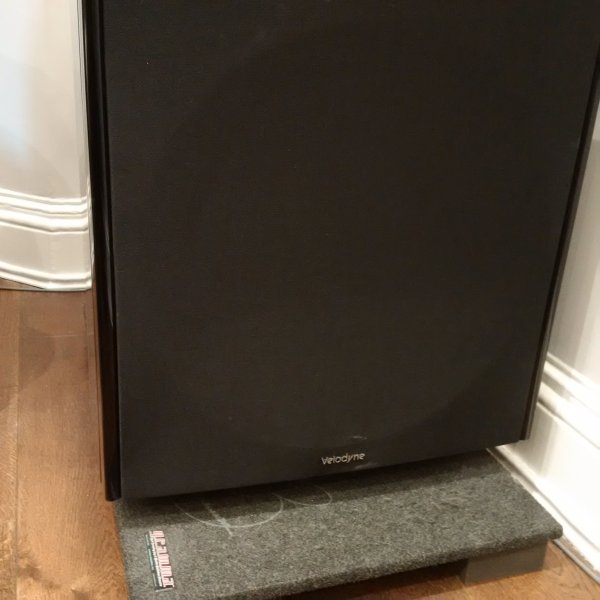7) I did hear a slight rounding of the leading edge, which had me searching up the amps' measurements online, and did find the previous model's Stereophile review which does show that slight rise delay. Unlike the predecessor amp's slight ringing after the rise event in the same measurement, this amp did not sound to me like there was ringing; I felt that, if it were to be measured, it would show a slight rounding of the leading edge, post-rise, as well as that ever so slight rise delay. Having said that, it never bothered me a single bit.
This is the one observation I cannot agree with, Ack. Yesterday, the day after you had visited, I re-checked transients, which so far I had found excellent in my new system, in fact, one of its strong points. A week ago I had made an acoustic change, which is adding an absorbing panel on the sidewall that the right speaker stands relatively close to (I had already had diffusing panels there). While I had noticed that it helped with 'ringing', I thought perhaps this had deteriorated transients and led to your observations.
What I found was, after listening critically to a variety of material:
1) There was no deterioration of transients by the absorbing panel, and they were as excellent as I had always found them.
2) On the Stockhausen piano the removal of the absorbing panel again led to more ringing at extreme treble notes, which objectively can only slow down transients. Yet superficially transients did initially seem 'faster', but that was only because they hardened up (the frequency balance hardly, if at all, changed). This was not genuine increase in speed, but perceived greater speed due to artificial hardness and 'etching' induced by speaker/room interactions. Thus a harder acoustic can lead one to believe that transients are faster, but it is not necessarily the case that this is really so.
When it comes to true transient speed and accuracy, and without etching, there will undoubtedly be systems that are even better than mine (and on some material I still deal with a certain amount of etching probably mostly due to room acoustics that remain imperfect after all the work). Yet so far, on all but the most demanding material *), I have not heard any that are better in this particular respect, including yours.
Obviously, audio inherently deals with compromises, and every system has its weak points. Also my system has a number of weaknesses that I readily concede -- and which I also considered upfront in my initial planning of the system --, and you rightfully pointed out a few of them. However, in my view speed and accuracy of transients is not one of these weaknesses. I am quite confident about this issue. Yet while I do not expect that to be the case, perhaps I will change my mind when I hear your system again next month, and I also look forward to hear the positive changes in it. I will certainly keep an open mind about perceived transient speed. Obviously, some differences in tonal balance between systems can also lead to perceived differences in transient behavior. I notice this also in different concert hall acoustics, which lead to varying tonal balances.
(I don't think the square wave measurements that you showed shed meaningful light on the issue, and as you point out, the rise delay of that 10 kHz (!) square wave is short. John Atkinson, by the way, was impressed by the overall performance he measured.)
___________________
*) when played very loudly, the most complex material, such as large-scale orchestral climaxes, produces some blurring of sound on my system, under which obviously transients will suffer as well





